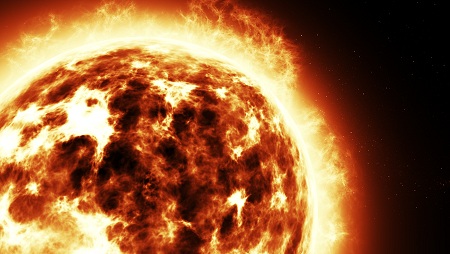Keeping an eye on the sun

date: 28/01/2015
Project: Data Services and Analysis Tools for Sol...
acronym: SEPSERVER
See also: CORDIS
Contact: Contact
Their findings could help minimise damage through more accurate forecasting of solar storms.
On average, big solar storms that have an impact down at ground level occur about once a year – or about 10 times per solar cycle (11 years). They mainly concern aviation: if a huge radiation storm produced by the Sun hits an aeroplane, the flight crew's exposure to radiation may increase. As high doses of radiation can cause damage to cells and thus lead to health problems, this has to be monitored closely.
The cost of solar energetic particle events
This type of radiation will also impair radio communication, leading to the re-routing of flights and substantial additional costs.
Solar energetic particles hitting a satellite in orbit is, however, much more frequent, since satellites are much more exposed in space. A satellite mission lasting for about 15 years will encounter hundreds of these events. Resulting damage to electronic components and temporary or even complete loss of service can come with an even heftier price-tag.
Better understanding of the underlying mechanisms behind the acceleration of energetic particles and their transport from the source to the Earth’s orbit is needed. This will enable more accurate forecasting of solar radiation storms, thus helping prevent such damage in the future.
Facilitating data access
With this aim in mind, the SEPServer project set up a service that brings together various datasets in one tool: spacecraft observations of radiation – or energetic particle fluxes that make up this radiation – are combined with radio observations of the sun from ground-based observatories and space-borne observatories looking at the Sun.
“For years, there have been a lot of very good datasets, but the access to these datasets is very very distributed,” explains Rami Vainio, who coordinated the project on behalf of the University of Helsinki. “Using all data available is very laborious. As a scientist, you have to go to several servers and you have to develop your own visualisation software to make any sense out of the data. Our aim was to develop a service which would do that more or less automatically for you.”
Currently, roughly 100 researchers – making up about 20% of this relatively small research community – are registered and are using SEPServer and the number is still increasing. Most of them specialise in solar eruptions and solar generated space storms.
In addition to this comprehensive collection of data, SEPServer provides users with modelling and simulation tools, to which many scientists did not have access before the project, facilitating their analyses and making them more accurate.
The importance of EU funding
While work on SEPServer continues after the end of the project itself (albeit on a much smaller scale), Vainio emphasises that this type of work requires a European consortium and thus European funding.
“We were 11 groups from six countries, and it would be nigh on impossible to get funding for such a large consortium from national sources, for instance,” he says. “What is more, it is difficult to receive funding for projects that are intended to serve the scientific community itself. So, instead of doing everything ourselves, we are enabling the community to do their research better. Our aim was not to solve the problem ourselves, but provide a tool to others. And FP7 [the former EU programme for research; Horizon2020 is its successor] made that possible.”
